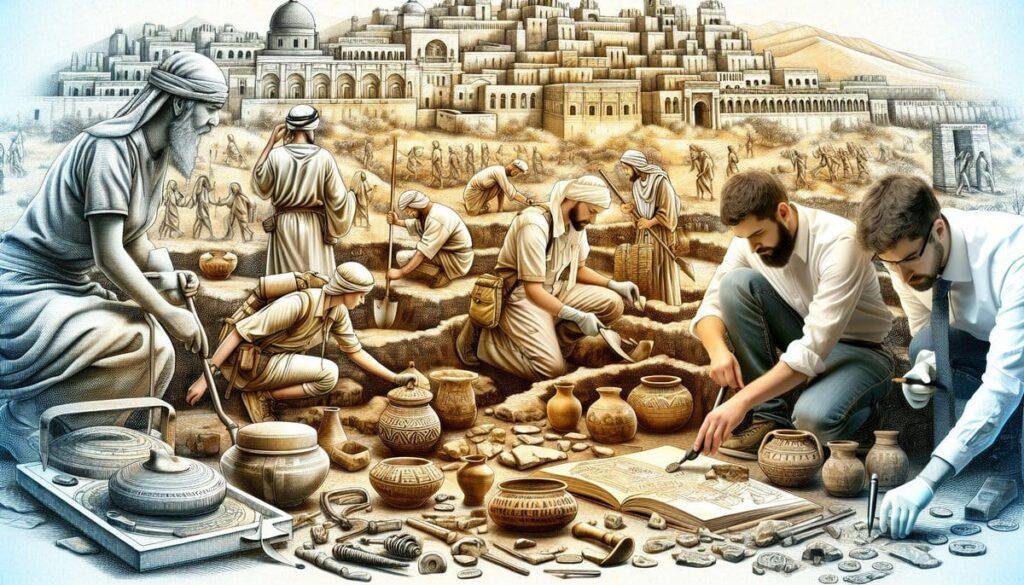What does compassion mean to you? In a world that often feels chaotic and disconnected, the idea of extending kindness to those in need becomes a guiding principle, reminding us of our shared humanity. One concept that embodies this spirit of compassion is the often-overlooked Good Samaritan Road, a metaphorical journey where wandering souls find relief, healing, and a sense of belonging. This article will take you on an enlightening journey through the historical, theological, and cultural significance of this key biblical concept, all while ensuring that your understanding deepens and broadens like the horizon at dusk.

The Good Samaritan: A Scriptural Foundation
To fully appreciate the Good Samaritan Road, we should start with the parable that inspired it. Found in the Gospel of Luke (10:25-37), the parable tells the story of a Samaritan man who helps an injured traveler, contrasting the Samaritan’s compassion with the indifference shown by two others. This age-old tale serves not only as a moral lesson but also illustrates the core idea of compassion that transcends ethnic and social boundaries.
Understanding the Parable’s Context
- Historical Background: The setting is crucial. Samaritans and Jews shared a long history of animosity, making the Samaritan’s goodwill a radical choice that shook societal norms.
- Cultural Implications: During this period, kindness shown to outsiders was often seen as a betrayal, making the Samaritan’s actions even more significant.
- Theological Significance: The parable underlines a significant teaching of Jesus: love and mercy are paramount in the face of legalistic religion.
By deconstructing the parable, you can better appreciate the depths of compassion that the Good Samaritan represents in both ancient and modern contexts.
The Journey Along Good Samaritan Road
When you think about the Good Samaritan, it may conjure up images of altruistic acts on a busy road. But let’s not merely stop there. The Good Samaritan Road symbolizes the ongoing journey toward compassion for all wandering souls.
Historical Significance
- Routes and Pathways: The road from Jerusalem to Jericho was known for its treacherous terrain and was a common route for travelers in biblical times.
- Real-Life Events: It’s essential to place the Good Samaritan story within its real-world context—many travelers faced danger, making the story resonate even more strongly with those who walked that road.
This significant thoroughfare of yesteryears now morphs metaphorically into a path where distressing encounters occur regularly, beckoning us with the challenge of how to react.
The Modern-Day Good Samaritan
Can you recall a moment when you might have been a “Good Samaritan” or when someone extended compassion to you? As you reflect on such instances, the following concepts come to light, emphasizing that this ancient example is as relevant now as it ever was.
Everyday Acts of Kindness
You don’t have to rescue someone from the brink of death to embody the spirit of the Good Samaritan. Small, everyday acts can resonate with tremendous impact. Consider:
- Helping a stranger in need: Whether it’s holding a door open or offering directions, little gestures matter.
- Volunteer work: Dedicating time to local charities or shelters creates pathways of compassion.
- Listening: Sometimes, just being present and listening can mean the world to someone going through a hard time.
These acts illustrate that you have the power to instigate change, even in subtle ways.
Cultural Shift: The Rise of Altruism in Society
In recent years, there has been a noticeable shift in society’s focus toward altruism and volunteerism. Here’s how you can interpret this cultural evolution:
- Social Media’s Role: Platforms like Twitter and Instagram showcase acts of kindness, creating a ripple effect that encourages others to join in.
- Community Building: Local groups often organize initiatives that promote charity, helping reinforce the Good Samaritan ethos.
This broader culture of compassion adds layers to our understanding of what it means to be a Good Samaritan today.

Archaeological Insights Into Compassion
Have you ever wondered how archaeology elucidates ancient narratives? The evidence it offers can help us mold our understanding of the biblical message and the Good Samaritan Road.
Findings Related to Ancient Roads
Road Infrastructure: Archaeologists have uncovered remnants of ancient roads leading to Jericho, revealing that they were indeed perilous pathways, frequented by thieves and robbers. This knowledge adds an authentic layer to the story of the Good Samaritan, as it validates the risks involved in the journey of the injured traveler.
Samaritan Identity: Excavations in Samaria reveal that these people had a rich cultural life and deep community ties. This challenges modern stereotypes that can lead to unfounded prejudices.
When placed within the framework of archaeology, you can see how profound and intricate the lessons drawn from the Good Samaritan story are.
The Theological Dimensions of Compassion
Moving beyond historical and archaeological contexts, consider how theology angles the discussion of compassion.
Theological Frameworks
- Universal Love: Compassion is positioned as a universal principle in many faith traditions, challenging exclusivity and calling for inclusivity.
- Merit and Grace: Understanding that grace is often undeserved can foster a mindset where you might extend compassion, not just to those who can reciprocate but to everyone.
The blend of theological scholarship with these timeless attributes enriches your awareness of why compassion matters.
Compassion Across Cultures
What if you looked beyond biblical contexts and considered how compassion is expressed globally? It turns out that many cultures mirror the message of the Good Samaritan in their own ways.
Global Perspectives on Compassion
- Buddhism and Compassion: The concept of karuna illustrates the deep-seated understanding of empathy and compassion that guides Buddhist followers.
- African Ubuntu Philosophy: Ubuntu encapsulates a communal sense of togetherness, emphasizing “I am because we are.” This philosophy aligns beautifully with Good Samaritan principles.
By seeking parallels across diverse cultures, you can appreciate a rich tapestry of humanity yearning for connection, love, and compassion.
The Psychological Impact of Kindness
Why do you think acts of kindness and compassion resonate so deeply with us? Delving into psychology can shed interesting light on this phenomenon.
Psychological Benefits
- Mood Enhancements: Simple acts of kindness can improve your mood, leading to a sense of contentment and even reduced stress levels.
- Community Bonds: When you participate in acts of compassion, you not only uplift others but also reinforce bonds within your community.
Understanding the psychological undercurrents of compassion may encourage you to align your actions with your inner values, benefiting not only yourself but also those around you.
Intersecting Compassion with Justice
As a contemporary society grapples with complex issues like social justice and systemic inequality, the Good Samaritan Road becomes even more poignant.
Justice and Compassion
- Compassionate Activism: Many modern activists draw upon Good Samaritan principles to advocate for those marginalized in society. By combining compassion with action, they forge meaningful change.
- Addressing Inequity: Compassion should be the lens through which you view societal inequities, prompting you to contribute to economic and social reforms.
You may find that the journey along the Good Samaritan Road is not merely about individual acts but also about collective movements toward creating a better society.
The Artistic Expression of Compassion
From literature to visual arts, compassion is often a theme that resonates throughout various art forms. Reflect on how this concept inspires artists across the ages.
Literature
Classic Texts: From Dostoevsky to Maya Angelou, literature has long explored themes of kindness, love, and empathy.
Contemporary Voices: Modern writers also capture the essence of compassion in diverse narratives that reflect today’s social dynamics.
You might immerse yourself in these works to gain further insight into how compassion can be interpreted through different lenses.
Visual Arts
Depictions of the Good Samaritan: Artists from various schools have portrayed this pivotal moment in multiple ways, each emphasizing different facets of compassion.
Modern Art: Contemporary artists often convey messages of kindness through installations, public art, and activism, challenging viewers to reflect on societal issues.
These artistic expressions show that compassion is not just an act but also an enduring narrative echoed through human creativity.
Conclusion: The Continuing Journey
Are you ready to apply the lessons of the Good Samaritan Road in your own life? As you move forward, let the essence of compassion guide your choices and interactions, both with those you know and those you’ve yet to meet.
The parable’s message transcends time and space, beckoning you to embody the spirit of kindness. Whether through small gestures or meaningful activism, your journey toward compassion can echo throughout your community and beyond, reminding others that they too are not alone.
By intertwining historical insights, theological reflections, and cultural expressions, you can appreciate the depth of the Good Samaritan Road—a journey that invites you to participate in a world that thrives on empathy, kindness, and unwavering compassion for wandering souls.


